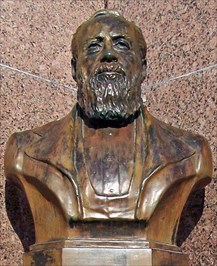Interesting History of the Immigration of Germans in Texas. Althtough Texas as a whole has strong German undercurrents, the strong outward culture was hidden and lost after the USA's war with Germany in WWI and II.
"Emphasis always lay on the preservation of German identity. In schools, students learned both English and German. German settlements usually offered free schools. New Braunfels eventually offered all of its young students a completely free primary education. In 1853, the singing society Sangerbund held its first German music festival. It has grown in popularity among not only German Texans, but also out-of-state participants of different ethnicities. While many German activities dissipated during World War I and II due to discrimination, the Boerne Village Band maintained an important presence. It has been applauded by Germany and the Texas Legislature for its preservation of German music. Ludwig von Roemer and Louis and Robert Kleberg, who settled the town of Cat Spring in 1832, are known for introducing Texas to its first piano, which they shipped from Germany. Kleberg’s son eventually became the owner of Texas’ famous King Ranch. Newspapers like the Galveston Zeitung and Der Bettelsades also helped perpetuate German heritage. August Siemering, who became a lieutenant in the Confederate Army, published the newspaper Freie Presse für Texas. Texas continues to celebrate the Texas-German heritage with events such as Octoberfest, Wurstfest, Schützenfeste, and German Culture Month.
The German immigrants’ mark on Texas is found in place names, like Schulenburg and Shiner; it’s heard in the popular cultural influences of Adolf Hofner, and the accordion in Tejano and Zydeco music; and it’s experienced in the easy-going temperament in the face of tremendous obstacles that gave Texas its motto, “the friendly state."

No comments:
Post a Comment